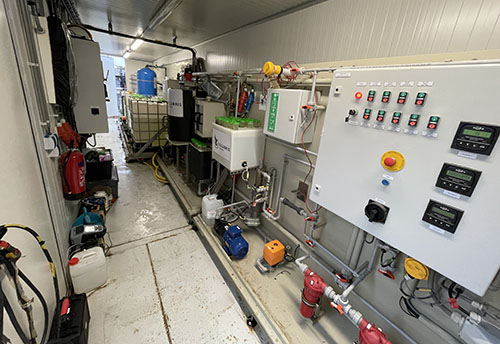Water Authority Limburg and Colubris pioneer with the CircularN project
In an era where sustainability and circularity take center stage, water authorities are exploring innovative ways to recover valuable resources from wastewater while reducing emissions. In Roermond, the Netherlands, Water Authority Limburg and Colubris are joining forces in the CircularN pilot project. Their mission? To extract nitrogen more efficiently from wastewater and transform it into a valuable fertilizer. Innovation technologist Saskia Hanneman speaks about the project with great enthusiasm.
 Daring to take the lead
Daring to take the lead
“Our water authority manages seventeen wastewater treatment plants (WWTPs) across the province of Limburg. Treating wastewater requires a significant amount of energy and leads to unwanted emissions, including nitrous oxide. This greenhouse gas, 265 times more potent than CO₂, is mainly produced when nitrogen is removed from wastewater through biological processes. These processes also demand high energy input and require considerable space.”
“As an Innovation Technologist at Water Authority Limburg, I focus on complex and challenging topics such as resource recovery and nitrous oxide emissions. We are not afraid to take the lead in exploring new methods to remove nitrogen and convert it into something useful. That is why we are also part of the CircularN project.”
“If you keep doing what you've always done, nothing will change.”
Saskia Hanneman | Water Authority Limburg
 Closing the loop
Closing the loop
“One of the aims of the CircularN project is to test a new technology for the recovery and reuse of ammonium at pilot scale. That’s what we are doing here in Roermond, among other places. The technology being tested at this wastewater treatment plant combines ion exchange with membrane stripping. What makes this approach unique is the way we connect different techniques, ultimately producing ammonium sulfate, a fertilizer that can be used in agriculture. In this way, the circle is closed.”
“Another focus of the Roermond project is to test a specific wastewater stream: filtrate water from sludge dewatering. Future regulations will require us to meet extremely low nitrogen limits, it is undesirable to return high ammonium loads from side streams back into the WWTP. If this combination of techniques proves successful, it would be an important step toward reducing the ammonium load on the main treatment process of the plant.”

“Compared to other sludge treatment methods, such as Thermal Pressure Hydrolysis (TPH), this could represent significant progress. Side-stream treatment typically requires extra effort. In the long term, however, this approach could ultimately create opportunities to apply the technology at lower ammonium concentrations.
“We are really pioneering here. The steps may be small, but if you keep doing what you’ve been doing for more than 50 years, nothing will change, and that doesn’t fit with the sustainability challenges we face as a water authority. We are curious to see what the project will ultimately deliver, but one thing is certain: we are learning a great deal along the way.”
About Water Authority Limburg
Every day, more than 700 employees of
Water Authority Limburg work to ensure safe dikes, dry feet, clean water, and sufficient water supplies, so that the residents of the province of Limburg can live, work, and enjoy recreation safely.
About CircularN
In addition to Water Authority Limburg and Colubris, the following organizations are involved in the CircularN pilot project: W&F Technologies BV, i3 Innovative Technologies BV, Delft University of Technology, and Waternet.